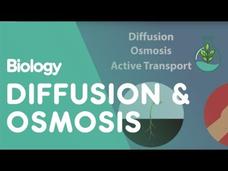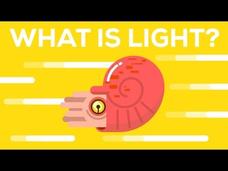Veritasium
Schlieren Imaging in Color!
One of the most flammable sports balls turns out to be ping pong balls. Watch a ping pong ball burn using Schlieren imaging. The video details how Schlieren imaging works in color, black and white, and in slow motion.
FuseSchool
Enzymes
He is the substrate to her enzyme! The video describes why enzymes are important. It details their functions, how they relate to substrates, and why they are found in so many places. The resource is part of the Fuse School playlist.
FuseSchool
Protein Synthesis
Your body determines which proteins are made based on the code in your DNA. A Fuse School video explains how protein synthesis works. It starts with DNA, moves through transcription, RNA, mRNA, completes translation, tRNA, and finally...
FuseSchool
Culturing Microorganisms Part 2
After culturing microorganisms, young scientists must calculate the size of the population. Use an insightful video that offers multiple methods to solve these problems. In addition to these methods, the video highlights the importance...
FuseSchool
Culturing Microorganisms Part 1
An informative video explains how to culture microorganisms such as bacteria in a petri dish as part of the Fuse School playlist. It focuses on the need for nutrients and a proper temperature, which varies based on the location and...
FuseSchool
Mitosis—Stages of Mitosis
Three hundred million cells die and are replaced every minute. An interesting Fuse School video focuses on mitosis, the process of cell division that produces identical copies of the cell. It highlights each of the key stages:...
FuseSchool
Structure of Bacteria
Your body contains more than 10 times the number of bacterial cells than human cells. Show your class an informative Fuse School video that outlines the structure of bacteria. The engaging resource also discusses the harmful bacteria in...
FuseSchool
How Enzymes Denature
A Fuse School video describes the optimal conditions for enzymes. It covers temperature, pH, and concentration as factors.
FuseSchool
Intro to Cells: Animal, Plant, Nerve and Red Blood Cells
Throw your dendrites in the air and wave 'em like you just don't care! An excellent video in the Fuse School playlist explains the parts and functions of cells. It describes their structures, functions, and specialties.
FuseSchool
Transport in Cells: Diffusion and Osmosis
Do cells breathe? An installment in the Fuse School series of videos describes how cells take in the nutrients they need and release the waste they don't need. It highlights the process of diffusion and osmosis.
FuseSchool
Transport in Cells: Active Transport
Human kidneys use active transport to hold on to glucose and sodium ions inside the kidneys. Another installment of the Fuse School playlist introduces active transport in cells. It describes why it is necessary and the unique process...
FuseSchool
What Is Blood?
Blood makes up approximately seven percent of the weight of each human, but what is blood? As part of the Fuse School Biology playlist, the video describes the four components of blood. It offers descriptions of what they look like as...
Kurzgesagt – In a Nutshell
How Evolution Works
Evolution remains a hotly debated topic in society—except among scientists. A progressive video explains the process of evolution from multiple points of view. It focuses on animals and the benefits of evolution to every population over...
Kurzgesagt – In a Nutshell
The Solar System—Our Home in Space
The first man-made object to enter space happened in 1942; just 71 years later, we sent the first object outside the entire solar system. The video introduces the solar system, starting with the sun. It covers each planet, the more...
Kurzgesagt – In a Nutshell
Everything You Need to Know About Planet Earth
Earth provides all of the systems needed for life, and how it does that is very complex. The video explains how Earth got here and what makes it special. It details its layers, the atmosphere, and human's place on the planet.
Kurzgesagt – In a Nutshell
Atoms As Big As Mountains—Neutron Stars Explained
What is the densest object in the universe? Neutron stars claim many unique properties—including the title of densest object—that are extreme, even for our universe. The video explains how neutron stars form and why it is important for...
Kurzgesagt – In a Nutshell
The Ebola Virus Explained—How Your Body Fights For Survival
Most realize that Ebola is deadly and highly contagious, but what exactly does it do to your body? The video offers a look at how Ebola spreads through your body systems. It includes how each part of the immune system responds.
Kurzgesagt – In a Nutshell
How Small Is An Atom? Spoiler: Very Small
The hydrogen in your body is exactly the same as the hydrogen in the sun. The video explains just how small an atom is and offers comparisons, such as the one above, to help facilitate understanding. It also presents the current model of...
Kurzgesagt – In a Nutshell
Measles Explained—Vaccinate or Not?
The measles virus travels through air and lives for two hours, making it more contagious than the flu. The video explains what measles does once it enters a body. It covers the spread of the virus and the body's immune system response.
Kurzgesagt – In a Nutshell
3 Reasons Why Nuclear Energy Is Awesome!—Part 3
Nuclear energy saves more lives than it harms. A powerful video explains the great things about nuclear energy and why we should increase nuclear power plants. It highlights the benefits for global warming and a new way to make nuclear...
Kurzgesagt – In a Nutshell
Nuclear Energy Explained: How does it work?—Part 1
In 1942, scientists first observed the first man-made nuclear reactor. The video introduces the history of nuclear energy from military development through today. It highlights the types of nuclear reactors built and the reasons as well...
Kurzgesagt – In a Nutshell
The Death Of Bees Explained—Parasites, Poison and Humans
Maybe instead of humans dying off from a war, they will die as a result of a lack of food. The video discusses this possibility and why it is becoming more likely. It explains the importance of bees and the many different ways humans...
Kurzgesagt – In a Nutshell
What Is Light?
Why is light like the Navy? Because they both travel at c. The video explains what light is and what makes visible light different from the rest of the light spectrum. Scholars finish the video enLIGHTened about the concept.
Kurzgesagt – In a Nutshell
Black Holes Explained—From Birth to Death
If a black hole suddenly replaced our sun, would we be sucked into it? The video answers this question and many others about black holes. It details the life cycle of a black hole and what would happen if you went into one.























